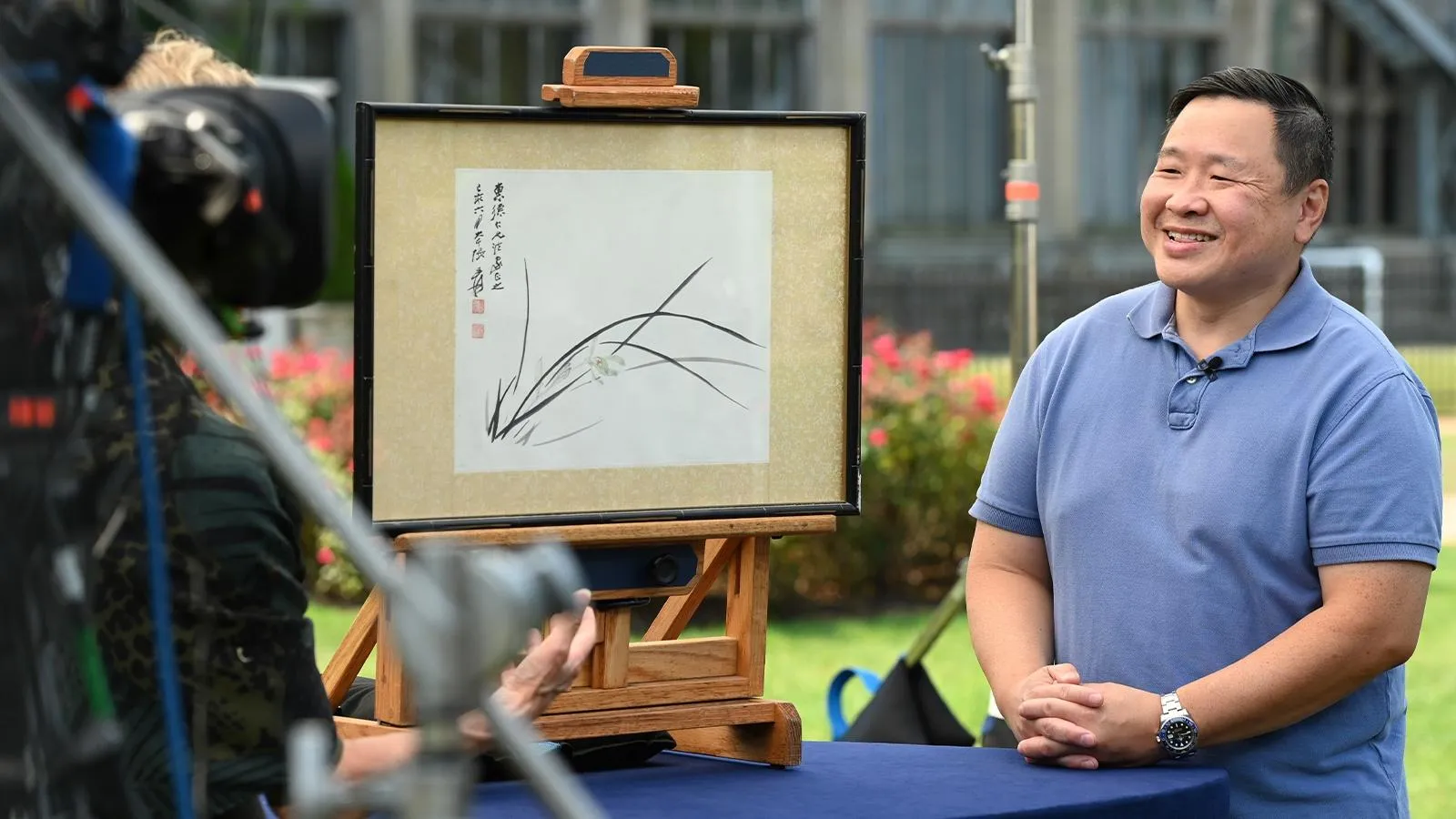GUEST: I brought a postcard written by Edvard Munch. In the very early 2000s, I had to travel to Oslo, Norway, all the time for work. I wandered into the National Gallery and made my way to the Munch room, where I, I saw "The Sick Child." It was so moving. I could feel the grief. It was clear that he, he must have had a lot of grief, if he could communicate that grief...
APPRAISER: Yeah, he lost his sister...
GUEST: ...to somebody else, to just a observer of this painting.
APPRAISER: He lost his...
GUEST: He lost his sister Sophie when, I think she might have been around 15...
APPRAISER: Yeah.
GUEST: ...when he was maybe 13. He carried that grief with him through his life, because he keeps coming back to that.
APPRAISER: Yeah, even "The Scream," they think, has references back.
GUEST: Yeah.
APPRAISER: I mean, it was all, that, he was haunted, and he was sick himself. He had a lot of illnesses as a kid.
GUEST: Yes, yes.
APPRAISER: And it's a big theme in all his, his work, is death.
GUEST: I wanted to learn everything I could about Edvard Munch, and then art in general, and it just, it kind of changed my life. (chuckles)
APPRAISER: Okay, so you don't need me here, then, eh? (laughing)
GUEST: Well, no, and then I, I came home and I wanted something from Edvard Munch. I went with an art dealer friend to an auction house, bid on a print, and just came very close.
APPRAISER: Very close? Did you underbid it?
GUEST: I didn't get it.
APPRAISER: One below, or...?
GUEST: No, like, you know, I was elbowing my friend, "We can go higher," and he's. like, "Absolutely not." (laugh) And then sometime in 2005, someone that loved me bought me this.
APPRAISER: Aw.
GUEST: And so I feel like, you know, I have a piece of Edvard Munch...
APPRAISER: You certainly do.
GUEST: (chuckles)
APPRAISER: This would be about the next-best thing you could get.
GUEST: I think it's even better so-- in a way.
APPRAISER: Well, we all know Munch for "The Scream." But his artwork has a depth to it that people can really sense the genuine pathos that's in his work. So this is his portrait, known as "Self-Portrait With Cigarette." It was painted in 1895. Now, to the fun side, what do you know about the, the side that he's corresponded on?
GUEST: Uh, well, I've been looking at this every day for about 20 years, and, um, I know a litt...
APPRAISER: You know German? You know a little German?
GUEST: A little bit of German.
APPRAISER: Okay.
GUEST: I think it says, "Dear Mr. Struck, You have my permission to reproduce 'Omega and the Pig.'" And then, "I'm doing really well. Heartfelt greetings, Edvard Munch."
APPRAISER: You're absolutely right, he's writing to his friend, artist and publisher Hermann Struck. And he wrote a book, it was published in 1908, and it was called "Die Kunst des Radierens," which is "The," um, "The Art of Etching." And for that, he got five artists to participate and in, include one of their works. Do you know about his breakdown in 1908?
GUEST: It's my understanding that he was living quite a life, you know, full of partying and drinking.
APPRAISER: (chuckles)
GUEST: And he was part of kind of a society of artists and writers in Norway.
APPRAISER: Mm-hmm.
GUEST: And he had a very, um, dramatic girlfriend, and I think that she shot him and shot his hand.
APPRAISER: Yeah, yeah, it was like Sid...
GUEST: And...
APPRAISER: It was like Sid Vicious in those days.
GUEST: Yeah.
APPRAISER: And finally, he had really come to a crashing halt.
GUEST: Yeah.
APPRAISER: He went into a psychiatric care in Copenhagen. This comes from the period when he had been released, he was recovering, and that's why in the note he said, "I'm doing well." It's not just a simple sentiment put in. It's really, he's reporting to Struck that he's okay, and he's getting back in the artistic saddle and he's producing works again. His signature is pretty rare. His, his autographed letters don't come up much. I would put an estimate of, uh, $3,000 to $4,000 on it.
GUEST: Wow.
APPRAISER: It's very kind of a special item, and, and you did well.
GUEST: Thank you.
APPRAISER: Or what, you know, whoever got that for you did you a great thing in that gift, and I'm sure you'll treasure it.



